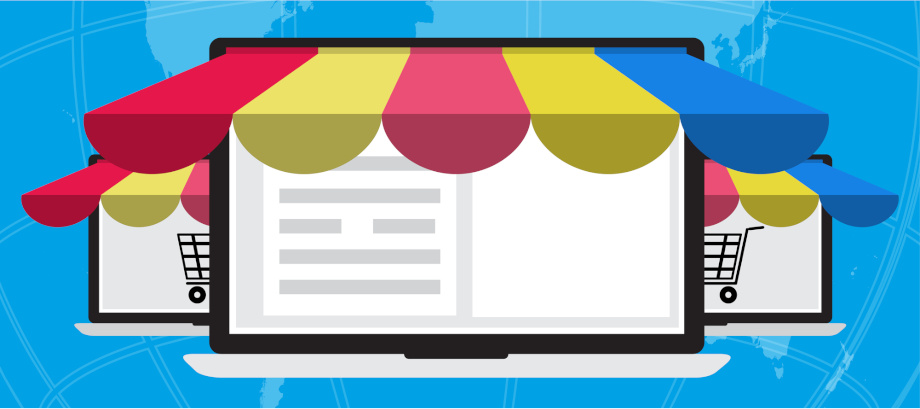
Table of Contents
- Approach challenges
- Implementation challenges
-
Practical challenges
- 10. Ensuring inventory visibility
- 11. Consolidating supply chain processes
- 12. Optimizing order fulfillment processes
- 13. Finding the proper transportation
- 14. Optimizing reverse logistics
- 15. Automating manual processes
- 16. Successfully running physical stores
- 17. Identifying the user
- 18. Engaging customers across the channels
- 19. Dealing with channel conflicts
- 20. Educating your employees
- Conclusion
Omnichannelness will remain the foremost trend in 2021. Omnichannel distribution, omnichannel marketing, omnichannel customer support, omnichannel analytics, omnichannel everything. The business value and the need to provide customers with a relevant and uninterrupted cross-channel experience is obvious. Why then can only 11% of companies claim that they have reached the stage of “sophisticated implementation” of an omnichannel strategy? Why isn’t everybody into omnichannel marketing already?
Because there are many challenges in implementing this strategy, from the approach to the technical details. Let’s figure out what the main challenges are and what can be done to overcome them.
Approach challenges
1. Getting stuck in multichannel
Many retailers try to implement an omnichannel strategy, but they still think channel-centric. You can distinguish the multichannel approach from the omnichannel approach as a collection of separate channels and not as a holistic system working as one. For the customers, the distinction is blurred. They’re not aware of it , but they don’t want to notice that they are switching channels. They just expect the experience to be seamless.
2. Trying to be too “omni”
When you move towards omnichannel marketing, it may seem that being present everywhere is a good idea. But don’t take the "omni" to the extreme. Being everywhere is really difficult and expensive. Diffusing your efforts and investments makes the job far more challenging. In fact, it’s better to focus on delivering a harmonized experience across channels where it is relevant, at least at the beginning.
3. Planning expenses and finding funds
Creating an omnichannel shopping experience can be pretty expensive. Especially, when aggressively growing competition sets irrationally low delivery or product prices. For consumers, this is great: prices are lower, delivery is faster, and there are more choices. But for the companies, it’s challenging to plan their investments so that they will get a decent return.
Implementation challenges
4. Structuring a marketing budget
How is your marketing budget structured?
| Brand dollars are separate from direct marketing dollars | 30% |
| Budget is allocated by business unit | 30% |
| Budget is allocated by channel | 20% |
| Online marketing is separate from offline marketing | 19% |
| Other | 1% |
Source: http://thecmoclub.com/wp-content/uploads/2015/10/Omnichannel-Guide_Final.pdf
In many companies, the marketing budget is divided between different business units, allocated by channel, and the online marketing budget is separate from of the offline marketing budget. In other words, the structure of marketing budgets doesn’t support the omnichannel approach. To break out of these resource silos, you have to change your approach, as we’ve mentioned above. You should design the budget to enable the creation of the experience as a whole, across the channels and departments, online and offline.
5. Measuring success
Having invested in the omnichannel approach, it’s reasonable to ask whether it really works. But it can be difficult to measure and attribute the success to the omnichannel strategy.
The company has to be prepared to handle information from many integrated touch-points. In an omnichannel ecosystem, all these touchpoints work together in conjunction with one another. A customer may notice a product due to a social media recommendation, thoroughly research it online, try it on in the physical store and make a purchase on the app. It doesn’t mean that the app drives the sales. You have to define common metrics to determine the contribution of each channel.
6. Integrating and consolidating all the channels
The key to the omnichannel approach is the seamlessness of the experience. You have to integrate all your marketing channels like websites, mobile, in-store touchpoints, social media recommendations, etc. The product information and brand message should be clear and unified across the channels and the interactions should be smooth. Your company’s internal systems, like ERP, CRM, PIM, must also be consolidated. And all customer data from all possible sources must be collected, and stored in one repository for analysis.
7. Synchronizing and analyzing data from all channels
To develop your omnichannel strategy, you’ll have to process huge volumes of data collected from various channels. Every part of it is valuable, from customer feedback, to the product information, inventory and security data, and competitor information. You gather the information from all kinds of online devices + offline shops. It’s not enough just to collect and store all of these data, you also have to analyze it and use it as leverage for growth. To get the results you need to build effective data management strategies and use the proper technologies you need information.
8. Acting upon the data
To analyze all these data quickly, and react immediately, you need Data Science and AI. Once you have the analysis you must be ready to use these cross-channel insights to create marketing campaigns, find and optimize inefficient distribution tactics and your inventory. To make use of omnichannel analytics you should integrate it with other business processes.
9. Updating legacy systems
With all the challenges we described, the complexity of managing operations rises. You need the right technological solutions to manage all the channels and inventory locations. Even if updating your technological base is costly, resist the temptation to postpone it. Failing with your omnichannel marketing strategy because of technical problems will cost even more. You have to analyze your requirements and choose the best solutions that can support the omnichannel approach.
Practical challenges
10. Ensuring inventory visibility
To ensure efficient omnichannel distribution, you must have an easy, accurate and up to date inventory stock status. To ensure timely delivery, you must establish a well-organized order fulfillment process and implement the right technological solution, like a proper WMS. Dropshipping items is especially risky. And managing logistics is always challenging during holiday shopping. Also, be sure that you measure the cost-effectiveness and efficiency of your product flows.
11. Consolidating supply chain processes
Various supply chain processes have to work together to provide the omnichannel distribution. For larger companies, synchronizing the management of procurement, warehousing, transportation, etc. is especially challenging.
12. Optimizing order fulfillment processes
All the omnichannel efforts will be in vain if you fail to deliver the orders on the promised date, make incomplete deliveries, or fail to notify the customer of status changes, etc. The best solutions here are thorough planning and the use of the right technology.
13. Finding the proper transportation
You’ll need find a way to offer your customers various means of transport to efficiently ship the product, taking account of all the situational factors. Companies compete on the fastest and cheapest delivery, giving their customers a variety of options. At the same time, transport costs rise when companies trying to go omnichannel continue to manage their transportation operations by location or division. The cost-cutting solution is centralized consolidation, routing, and procurement.
14. Optimizing reverse logistics
The process of returning goods should also be omnichannel. For now, the most frequently used channel for returns is old-fashioned mail but Amazon drop-off points and in-store returns are gaining popularity. If customers can return a product bought online, offline, they often make purchases in the store immediately after that.
15. Automating manual processes
It seems obvious that, before implementing the omnichannel strategy, a company should take care of automating internal processes. However, businesses often try to go omnichannel using manual, paper-based processes. A simple but important requirement, again, is to implement a technology base, like barcode scanning and proper WMS.
16. Successfully running physical stores
It would be wrong to focus only on digital marketing channels. There are examples of digital businesses who open brick-and-mortar stores to ensure an omnichannel experience for their customers. However, to run a physical store successfully, you have to remember that experience matters. To make a profit from this channel, you should not only integrate the digital experience with it but also take steps to make it more attractive to all customers. These could include a special cozy design, additional services or even promotions in physical stores.
17. Identifying the user
You can ensure omnichannel personalized service only if you are able to track users during all their cross-channel interaction with your brand. If an online browsing history of a customer is available to the shop assistants in the brick-and-mortar store, they are more likely to provide a better, more personalized service. They, too, should add information to the profile about customer visits to physical stores.
18. Engaging customers across the channels
You should apply a centralized engagement strategy. An old-fashioned customer engagement strategy developed for multiple but separate channels will not provide the omnichannel connection between a business and its customers. You have to understand the behavior of your customers across channels and map their journey.
19. Dealing with channel conflicts
You must fully integrate the channels to prevent channel conflicts. The price, product information and, most importantly, stock on hand should all reflect the facts. For this, you have to use your omnichannel analytics and predict demand. But you also have to define rules about what to do when there are channel conflicts. For example, decide which channels should get priority when stock is limited.
20. Educating your employees
It is close to impossible to implement and carry out successful multichannel marketing if only the management is in. You have to train your employees about best practices, including the approach itself and technological details.
Conclusion
When you develop your omnichannel strategy, it’s important to consider these challenges and plan measures to overcome them. If you are already struggling with some of them, try to analyze your approach. Is it really holistic? Do you have your technological base updated? Have you taken account of all the practical details? We hope this article helps you to get the best results and the right to claim that you’ve reached the stage of “sophisticated implementation” in an omnichannel approach.


